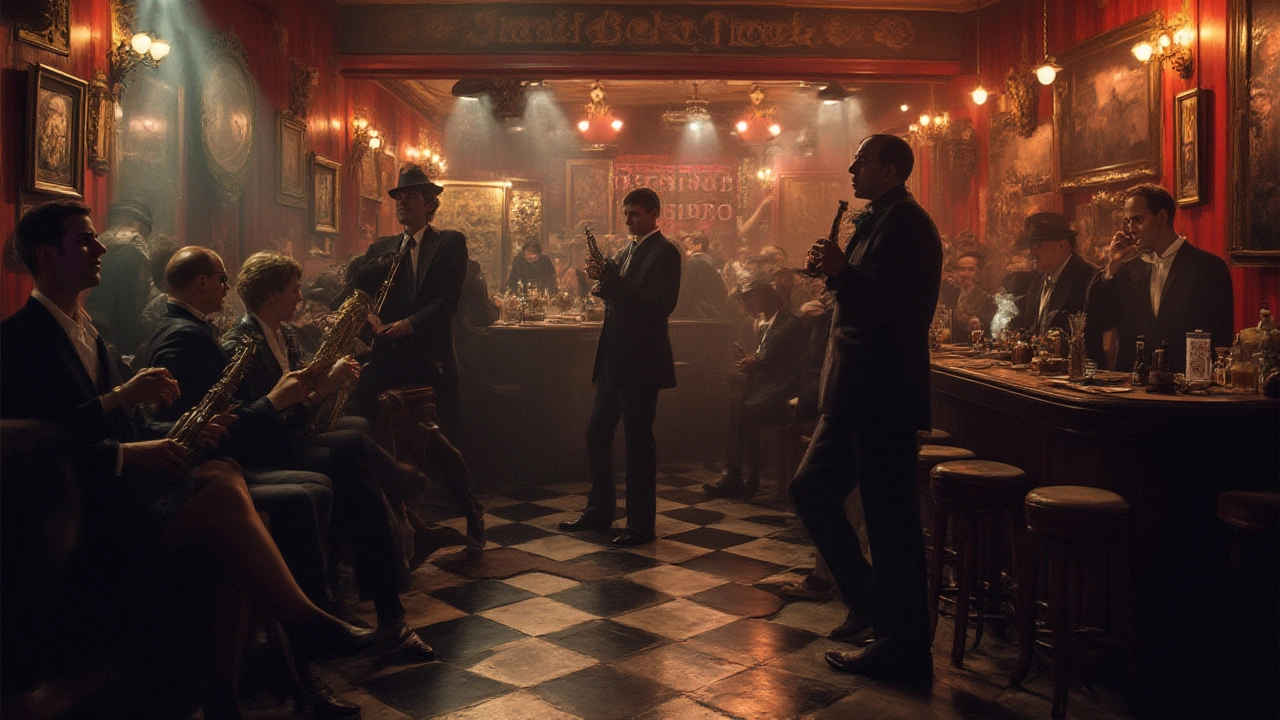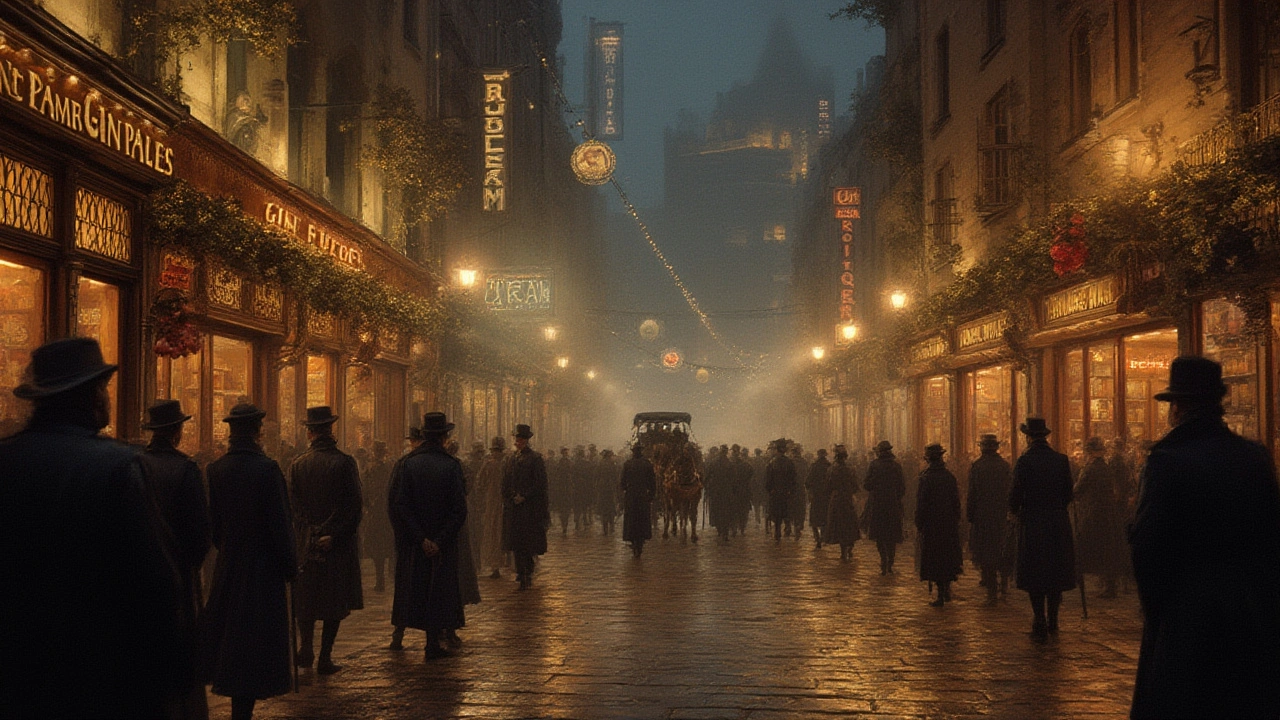Ever walked through Soho at midnight and wondered how London wound up as the party capital it is today? London nightlife hasn’t always been about glitter balls and DJs dropping house anthems. From cheeky gin dens during Queen Victoria’s time to the raucous dance floors beneath the city streets now, every generation has left its stamp. You can spot traces of the past if you know where to look—underneath the layers of neon, street art, and contactless payments, the city’s nightlife pulses with lessons from centuries-old taverns, prohibition-era jazz, and the wild spirit of the swinging ’60s. Before that next big night out, check the story behind the bars, boozers, and basement venues that have defined the wild side of London for two centuries.
Rowdy Taverns and Gin Palaces: Victorian Nightlife in London
London didn’t invent the pub, but it perfected it. By the early 1800s, the city’s social life played out mostly in taverns, alehouses, and a thriving underworld of gin shops. You’ve probably heard of “Mother’s Ruin”—the nickname for gin because it wasn’t just a drink but an entire crisis. In 18th-century London, cheap gin flooded Covent Garden and Spitalfields, sparking what’s now famously called the Gin Craze. Parliament tried cracking down. Didn’t work. Gin palaces popped up everywhere: expect mirrored glass, flickering gaslight, and working-class Londoners spending what little they had on a night away from brutal realities. Places like the Old Mitre in Holborn and Ye Olde Cheshire Cheese on Fleet Street still whisper stories from those days if you listen closely enough.
Victorian morality left its stamp, too. While the city’s smarter set sipped port by the fire in gentlemen’s clubs (the stuffy kind with high ceilings, not dancefloors), the working classes packed into public houses. The pub was more than somewhere to grab an ale; it was your chemist, your news source, your gossip grapevine. Friday nights meant singalongs, often around a battered upright piano with a toothless old regular pounding out the chorus. The “lock-in”—that most British of traditions, where the landlord quietly re-latched the door so regulars could keep drinking after legal hours—was alive and well, even back then.
If you’re on a heritage kick, look for preserved gin palaces like the Princess Louise in Holborn with its marble urinals (yes, seriously), or the Viaduct Tavern opposite the Old Bailey, rumoured to have old prison cells beneath the floor. London’s map still glows with pub names that go back centuries: The George, The Lamb & Flag, The Spaniards Inn. These spots aren’t just about the pints—they’re little time capsules. You’ll often find Londoners mixing new IPA trends with proper Victorian tradition, especially when it comes to the Sunday roast.
All those pints added up—by 1870, there were more than 7,000 pubs in London alone, with many doubling as music halls or small theatres. The line between entertainment and excess was always a bit blurry. That’s London for you.
Jazz, Rock, and Rebellion: London Nightlife in the 20th Century
Fast forward to the 1920s, and you’ll see a new kind of nightlife shaking off tradition. The Roaring Twenties lit a fuse under London’s club scene. Jazz arrived from Harlem and New Orleans—Suddenly, speakeasies and cabaret bars were all the rage in Soho and Mayfair, filling the night with saxophones and snappy hats. The Café de Paris, a true icon under Leicester Square, became the go-to for glittering parties, attracting everyone from Hollywood stars to underworld kingpins. Downstairs, the party roared on even throughout the Blitz, until the tragic bombing of 1941 left a scar still felt today.
You can’t talk about London nightlife and skip the postwar dancehalls and the 1960s music explosion. Swinging London rewrote the rules. Teenagers flocked to coffee bars in Soho—think the legendary 2i’s, where Cliff Richard and Tommy Steele cut their teeth. Around the corner, Ronnie Scott opened his jazz club in 1959, now one of the world’s oldest and most respected jazz venues. The Marquee Club in Wardour Street launched rock legends like The Rolling Stones and The Who. Even the Beatles crossed over from Liverpool to test the London crowd—Paul McCartney’s first gig in the capital wasn’t at the Albert Hall but at the more humble Tottenham Royal.
Pubs didn’t disappear: they just adapted. Landlords gave up the pianos for pinball machines and even some slot machines. The Soho pub crawl became a modern rite of passage, with institutions like The French House and The Coach and Horses drawing everyone from artists to beggars. By the ’80s, raves took off in warehouses and secret spots—illegal, wild, unpredictable. The Criminal Justice Act was supposed to kill off those scenes, but Londoners just pushed their creativity deeper underground, spawning pirate radio, secret after-parties, and a nightlife that was never really “legal” but always electric.
Looking for landmarks? Try a late-night set at Ronnie Scott’s, or see a gig downstairs at The 100 Club in Oxford Street—where punk exploded in the ’70s and Amy Winehouse played gritty, unforgettable sets. It’s the sense of rebellion that still pulses through London after dark. This isn’t just a place to party. It’s a stage for anyone who doesn’t quite fit in—until here, they do.

Late-Night Diversity: Pubs, Clubs, and Hidden Gems in Modern London
Step into London after dark now, and it’s a whole city on the move. From soul food in Brixton to all-night kebab shops in Dalston, nightlife is beautifully unpredictable. Gone are the days when you could only grab a drink in a stuffy, smoke-filled “local.” Now, vegan bars, craft breweries, late-night coffee shops, drag cabarets, and pop-up speakeasies all jostle for attention.
The London nightlife crowd is famously diverse. In Shoreditch, you’re as likely to find a rooftop terrace with tap cocktails as a basement techno rave pulsing until sunrise. Down in Soho, queer bars thrive—from the legendary G-A-Y bar to hidden clubs spread along Old Compton Street. Peckham’s rooftop bars and warehouse venues have become go-tos for a young, eclectic crowd, while Camden’s pubs and music venues keep the indie spirit alive.
Love your history? Some modern clubs sit literally on top of centuries-old vaults and crypts. Fabric, once a Victorian meat store, now pumps out drum and bass to thousands every weekend. The Night Tube, launched in 2016, changed everything—making it easier than ever to skip between north, south, east, and west London without clock-watching. According to TFL, more than 8 million journeys took place on the Night Tube in its first year alone. That means far less time worrying about the last train home and way more space for spontaneous nights out.
If you like a slightly slower pace, traditional pubs haven’t gone anywhere. The craft beer wave hit hard—spots like The Euston Tap and BrewDog serve up unique brews you won’t see outside the M25. Comedy clubs and theatre-pubs, like The Bill Murray in Islington, give a distinctly London twist to a night on the town. Bottom line: there’s a niche, a community, a corner booth, or a crowded dance floor out there for everyone—if you know where to look.
Check out annual events that make London’s social calendar legendary. The Notting Hill Carnival every August brings Caribbean rhythms and street parties, while London Pride storms central streets in a rainbow parade—and the late-night afterparties run for days. Music fans should never miss the free Proms in the Park, or the mind-blowing all-nighter at Printworks.
| Year | Pubs in London | Clubs & Venues | Annual Nightlife Revenue (£ billions) |
|---|---|---|---|
| 1870 | 7000+ | ~100 | -- |
| 1975 | 5600 | 350 | 0.9 |
| 2000 | 4000 | 700+ | 2.3 |
| 2024 | 3100 | 1000+ | >4.5 |
Notice the shift—fewer pubs, far more diversity in clubs and venues, and a huge jump in revenue. Londoners are drinking less, but going out more… and differently.
The Future of London After Dark: Tech, Culture, and Social Trends
So where is London nightlife headed? The script is still being written. Technology has changed everything—apps can find you a secret cocktail bar on an unmarked alley in Hackney, or help you skip a queue at Ministry of Sound on a Saturday. New digital platforms let you book a table, order food, and grab last-minute entry to exclusive gigs. Some venues even run silent discos where everyone gets headphones and their own dance sound; it’s like stepping into a music video, except it’s real, right there in Camden Market or out on Southbank.
Shifts in drinking habits are shaping what “a night out” even means. More Londoners are skipping the binge in favour of low- and no-alcohol menus. Major brands have started stocking hard seltzer, zero-proof gin, and even alcohol-free craft IPA. Expect even more of this trend in 2025. And sustainability? Many of the most hyped new clubs and pubs have switched to solar panels, green kitchens, and waste-free cocktail recipes—just check out places like Nine Lives in London Bridge.
Culturally, London is keeping its doors open to global influences as the city becomes even more diverse. Korean karaoke bars, Jamaican dancehall nights, West African music pop-ups, and Mediterranean disco are all staples on the events calendar. Apps like Dice and Resident Advisor push out events you’d never find flipping through old-school flyers. Nightlife also isn’t just about drinking anymore—late-night yoga, immersive theatre, and indie gaming nights are all pulling in young crowds. Forget the old clichés; a Friday night in London might mean anything from a secret fog-filled warehouse party to a peaceful jazz gig on a canal boat or snapping up tickets to a drag brunch on Brick Lane.
Safety has become a bigger deal since the pandemic. London pioneered “Ask for Angela” in pubs—a code phrase at the bar if you need help or feel unsafe. Nightlife venues are training staff on issues like spiking, and more places are rolling out extra security and even offering free phone charging or safe taxis home.
People living in London know the city never truly goes quiet after dark. Each borough, from Hackney to Chelsea, offers its own twist on the classic night out. Whether you’re after a hidden microbrewery, a roaring party with world-class DJs, or just swapping gossip with locals in a 200-year-old taproom, the city’s story is never finished. It’s just onto the next chapter—music pulsing beneath the cobblestones, lights winking late into the night, the energy catching on every corner. The old and the new never stop colliding in London after dark. Isn’t that what makes it special?

